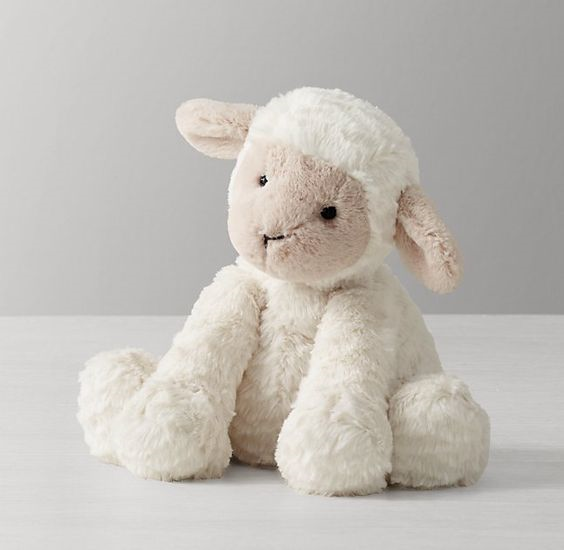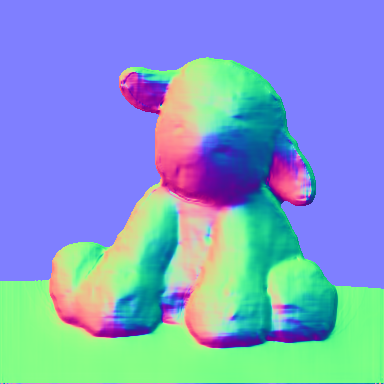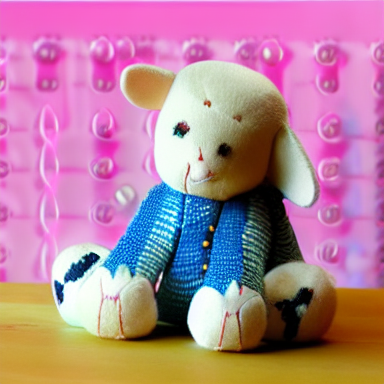license: openrail
base_model: runwayml/stable-diffusion-v1-5
tags:
- art
- controlnet
- stable-diffusion
Controlnet
Controlnet is an auxiliary model which augments pre-trained diffusion models with an additional conditioning.
Controlnet comes with multiple auxiliary models, each which allows a different type of conditioning
Controlnet's auxiliary models are trained with stable diffusion 1.5. Experimentally, the auxiliary models can be used with other diffusion models such as dreamboothed stable diffusion.
The auxiliary conditioning is passed directly to the diffusers pipeline. If you want to process an image to create the auxiliary conditioning, external dependencies are required.
Some of the additional conditionings can be extracted from images via additional models. We extracted these additional models from the original controlnet repo into a separate package that can be found on github.
Canny edge detection
Install opencv
$ pip install opencv-contrib-python
import cv2
from PIL import Image
from diffusers import StableDiffusionControlNetPipeline, ControlNetModel
import torch
import numpy as np
image = Image.open('images/bird.png')
image = np.array(image)
low_threshold = 100
high_threshold = 200
image = cv2.Canny(image, low_threshold, high_threshold)
image = image[:, :, None]
image = np.concatenate([image, image, image], axis=2)
image = Image.fromarray(image)
controlnet = ControlNetModel.from_pretrained(
"fusing/stable-diffusion-v1-5-controlnet-canny",
)
pipe = StableDiffusionControlNetPipeline.from_pretrained(
"runwayml/stable-diffusion-v1-5", controlnet=controlnet, safety_checker=None
)
pipe.to('cuda')
image = pipe("bird", image).images[0]
image.save('images/bird_canny_out.png')
M-LSD Straight line detection
Install the additional controlnet models package.
$ pip install git+https://github.com/patrickvonplaten/human_pose.git
from PIL import Image
from diffusers import StableDiffusionControlNetPipeline, ControlNetModel
import torch
from human_pose import MLSDdetector
mlsd = MLSDdetector.from_pretrained('lllyasviel/ControlNet')
image = Image.open('images/room.png')
image = mlsd(image)
controlnet = ControlNetModel.from_pretrained(
"fusing/stable-diffusion-v1-5-controlnet-mlsd",
)
pipe = StableDiffusionControlNetPipeline.from_pretrained(
"runwayml/stable-diffusion-v1-5", controlnet=controlnet, safety_checker=None
)
pipe.to('cuda')
image = pipe("room", image).images[0]
image.save('images/room_mlsd_out.png')
Pose estimation
Install the additional controlnet models package.
$ pip install git+https://github.com/patrickvonplaten/human_pose.git
from PIL import Image
from diffusers import StableDiffusionControlNetPipeline, ControlNetModel
import torch
from human_pose import OpenposeDetector
openpose = OpenposeDetector.from_pretrained('lllyasviel/ControlNet')
image = Image.open('images/pose.png')
image = openpose(image)
controlnet = ControlNetModel.from_pretrained(
"fusing/stable-diffusion-v1-5-controlnet-openpose",
)
pipe = StableDiffusionControlNetPipeline.from_pretrained(
"runwayml/stable-diffusion-v1-5", controlnet=controlnet, safety_checker=None
)
pipe.to('cuda')
image = pipe("chef in the kitchen", image).images[0]
image.save('images/chef_pose_out.png')
Semantic Segmentation
Semantic segmentation relies on transformers. Transformers is a dependency of diffusers for running controlnet, so you should have it installed already.
from transformers import AutoImageProcessor, UperNetForSemanticSegmentation
from PIL import Image
import numpy as np
from controlnet_utils import ade_palette
import torch
from diffusers import StableDiffusionControlNetPipeline, ControlNetModel
image_processor = AutoImageProcessor.from_pretrained("openmmlab/upernet-convnext-small")
image_segmentor = UperNetForSemanticSegmentation.from_pretrained("openmmlab/upernet-convnext-small")
image = Image.open("./images/house.png").convert('RGB')
pixel_values = image_processor(image, return_tensors="pt").pixel_values
with torch.no_grad():
outputs = image_segmentor(pixel_values)
seg = image_processor.post_process_semantic_segmentation(outputs, target_sizes=[image.size[::-1]])[0]
color_seg = np.zeros((seg.shape[0], seg.shape[1], 3), dtype=np.uint8) # height, width, 3
palette = np.array(ade_palette())
for label, color in enumerate(palette):
color_seg[seg == label, :] = color
color_seg = color_seg.astype(np.uint8)
image = Image.fromarray(color_seg)
controlnet = ControlNetModel.from_pretrained(
"fusing/stable-diffusion-v1-5-controlnet-seg",
)
pipe = StableDiffusionControlNetPipeline.from_pretrained(
"runwayml/stable-diffusion-v1-5", controlnet=controlnet, safety_checker=None
)
pipe.to('cuda')
image = pipe("house", image).images[0]
image.save('./images/house_seg_out.png')
Depth control
Depth control relies on transformers. Transformers is a dependency of diffusers for running controlnet, so you should have it installed already.
from transformers import pipeline
from diffusers import StableDiffusionControlNetPipeline, ControlNetModel
from PIL import Image
import numpy as np
depth_estimator = pipeline('depth-estimation')
image = Image.open('./images/stormtrooper.png')
image = depth_estimator(image)['depth']
image = np.array(image)
image = image[:, :, None]
image = np.concatenate([image, image, image], axis=2)
image = Image.fromarray(image)
controlnet = ControlNetModel.from_pretrained(
"fusing/stable-diffusion-v1-5-controlnet-depth",
)
pipe = StableDiffusionControlNetPipeline.from_pretrained(
"runwayml/stable-diffusion-v1-5", controlnet=controlnet, safety_checker=None
)
pipe.to('cuda')
image = pipe("Stormtrooper's lecture", image).images[0]
image.save('./images/stormtrooper_depth_out.png')
Normal map
from PIL import Image
from transformers import pipeline
import numpy as np
import cv2
from diffusers import StableDiffusionControlNetPipeline, ControlNetModel
image = Image.open("images/toy.png").convert("RGB")
depth_estimator = pipeline("depth-estimation", model ="Intel/dpt-hybrid-midas" )
image = depth_estimator(image)['predicted_depth'][0]
image = image.numpy()
image_depth = image.copy()
image_depth -= np.min(image_depth)
image_depth /= np.max(image_depth)
bg_threhold = 0.4
x = cv2.Sobel(image, cv2.CV_32F, 1, 0, ksize=3)
x[image_depth < bg_threhold] = 0
y = cv2.Sobel(image, cv2.CV_32F, 0, 1, ksize=3)
y[image_depth < bg_threhold] = 0
z = np.ones_like(x) * np.pi * 2.0
image = np.stack([x, y, z], axis=2)
image /= np.sum(image ** 2.0, axis=2, keepdims=True) ** 0.5
image = (image * 127.5 + 127.5).clip(0, 255).astype(np.uint8)
image = Image.fromarray(image)
controlnet = ControlNetModel.from_pretrained(
"fusing/stable-diffusion-v1-5-controlnet-normal",
)
pipe = StableDiffusionControlNetPipeline.from_pretrained(
"runwayml/stable-diffusion-v1-5", controlnet=controlnet, safety_checker=None
)
pipe.to('cuda')
image = pipe("cute toy", image).images[0]
image.save('images/toy_normal_out.png')
Scribble
Install the additional controlnet models package.
$ pip install git+https://github.com/patrickvonplaten/human_pose.git
from PIL import Image
from diffusers import StableDiffusionControlNetPipeline, ControlNetModel
import torch
from human_pose import HEDdetector
hed = HEDdetector.from_pretrained('lllyasviel/ControlNet')
image = Image.open('images/bag.png')
image = hed(image, scribble=True)
controlnet = ControlNetModel.from_pretrained(
"fusing/stable-diffusion-v1-5-controlnet-scribble",
)
pipe = StableDiffusionControlNetPipeline.from_pretrained(
"runwayml/stable-diffusion-v1-5", controlnet=controlnet, safety_checker=None
)
pipe.to('cuda')
image = pipe("bag", image).images[0]
image.save('images/bag_scribble_out.png')
HED Boundary
Install the additional controlnet models package.
$ pip install git+https://github.com/patrickvonplaten/human_pose.git
from PIL import Image
from diffusers import StableDiffusionControlNetPipeline, ControlNetModel
import torch
from human_pose import HEDdetector
hed = HEDdetector.from_pretrained('lllyasviel/ControlNet')
image = Image.open('images/man.png')
image = hed(image)
controlnet = ControlNetModel.from_pretrained(
"fusing/stable-diffusion-v1-5-controlnet-hed",
)
pipe = StableDiffusionControlNetPipeline.from_pretrained(
"runwayml/stable-diffusion-v1-5", controlnet=controlnet, safety_checker=None
)
pipe.to('cuda')
image = pipe("oil painting of handsome old man, masterpiece", image).images[0]
image.save('images/man_hed_out.png')























